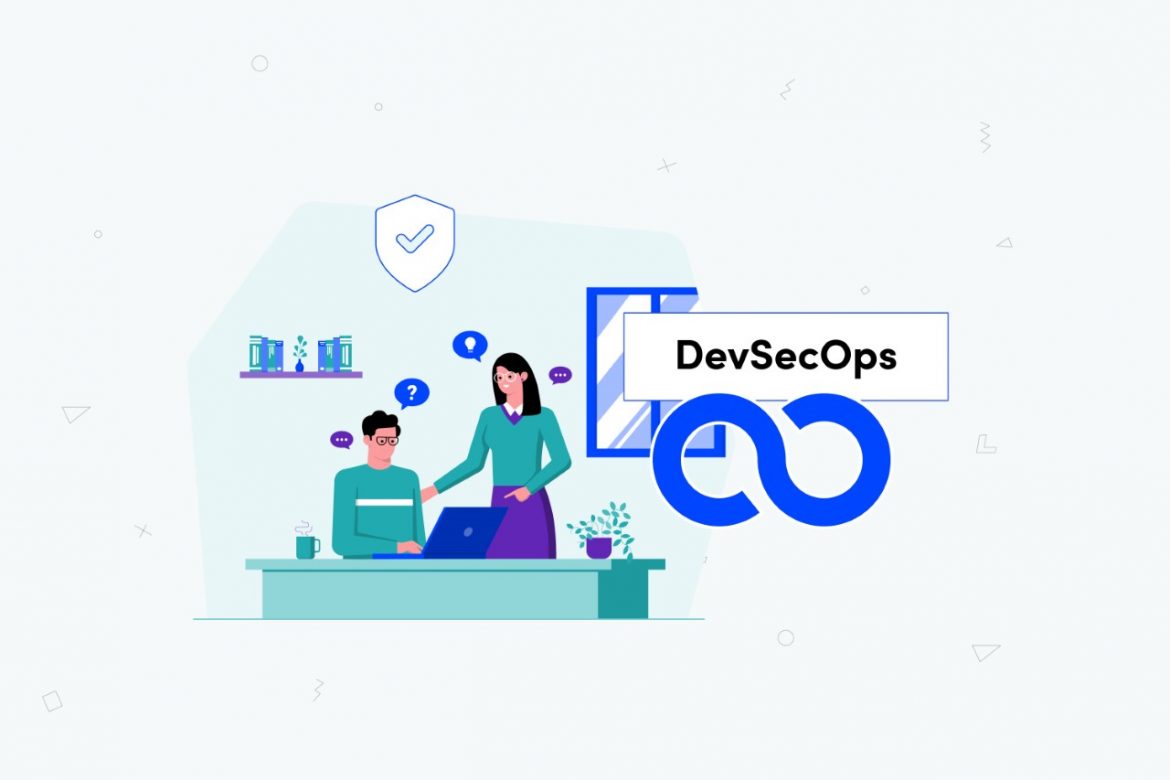Developer’s concerns should not boil down to digital infrastructure security. Source code security also matters.
Software development cannot be on the safe side unless the source code complies with the security requirements. A stand-alone class of utilities is in place to test apps for bugs as they are being engineered. These tools are now on the rise and improving their performance. The improvements partially result from the regulatory framework getting ever more stringent.
We are going to review the suites commonly applied to examine source code security. This article shows how the IAST, DAST, and SAST solutions operate and differ from each other and explain the RASP technology which is currently on the rise. It will also disclose the features available with these scanning apps, as well as what the future holds for this evolving market.
Code security testing background and developments
Standard methods for protecting the IT infrastructure of a business or organization patch vulnerabilities in operating systems and other common software such as database management apps. They are well-developed. Meanwhile, some suites are designed specifically to operate in a narrow area and are less common. These software products can easily become a gateway for malware unless their operators detect and patch their vulnerabilities in time.
Tracking the source code distributed across your corporate IT infrastructure is critical. Its authorship is also to be disclosed. Should any bugs be found in a specific area, the IT professionals need to identify the systems concerned and patch the flaws immediately. If possible, they assign this debugging to the affected code developer.
A corporate cyber environment is a system of interrelated levels. Defending the root layer is critical as it holds all the others. The security umbrella shall extend from the ground up covering every level of the digital architecture. Specifying a goal the code security scanning is to achieve helps to reduce the costs involved in the analysis. The objective may boil down to ensuring the applicable legal framework is complied with or mitigating the threat posed by malware and other attacks.
Harnessing code verification suites enables software engineers to exclude any actions and expenditures involved in fixing the code vulnerabilities spotted upon their product release. A company must understand how critical code security is. The businesses ignoring this issue are going to invest funds and other assets in fixing the bugs emerging in the future.
Certain apps and platforms have access to corporate cashflows. To name a few, these are trading and banking software suites. If malefactors hack these solutions, the impacts include more than reputation losses as the attackers can steal corporate funds.
Securing source code at the development stage goes beyond its scanning. However, scanning is the initial and inevitable measure enabling the developer to streamline the follow-up workflows. Where cyber-security crew makes use of patches only, the approach is more awaiting than preventing, and therefore the attackers have more options and time to hack the infrastructure. Moving security verification to the earliest possible stage of the coding workflow, commonly referred to as Shift Left, minimizes the expenditures arising in the case of any issues both for the software engineer and the software user down the road.
Besides, pay attention that disregarding legal compliance walks you on thin ice. A party concerned needs to figure out details of the code ownership for the event of its business dividing into two or more entities, as well as the licensing conditions for the software it rents. The code analysis in such scenarios contributes best to the legal department activities.
Does non-proprietary software really help to scan the code?
Scanners cannot actually go free of charge, and there is no such thing as low-cost cyber-security. That being said, neither free nor paid solutions ensure the code security for good. The discussion revolves around choosing the best solution to address a specific issue. The analyst can mix various kernels to scan the software under development at specific periods of its engineering and harness apps specifically for certain processes.
Non-proprietary, that is, free software is capable of ensuring initial protection, but odds are that you will look for some dedicated IT security suites to fix more sophisticated flaws. Paid software tends to come up with in-depth advisory features. That is essential as just flagging an issue does not suffice in too many cases. Detailing the follow-up may also be necessary, including every step to automatically debugging a faulty code.
The vendors of such suites need to spend a good deal of money and working hours to integrate user-friendly vulnerability specifications, as well as handy advisory tools into the scanners they provide. Open-source software developers tend to have no such facilities.
Explaining static, dynamic, and hybrid approaches. Opting for the best fit.
To understand the classification of code security analysis suites, let’s disclose the following terms. Time-honored techniques include SAST, DAST, and IAST (static, dynamic, and hybrid application security testing). Besides, there is a fuzzing approach aka FAST (feedback-based application security testing). The fifth approach in our listing is RASP. This acronym stands for real-time application security testing and protects software from detecting and responding to malicious intrusion immediately.
Another type of scanner to review is SCA (software composition analysis). Apps within this category aim at exploring third-party software products leveraged by the company. Basic implementations of such scanners detect non-native libraries embedded into the coding workflow and identify potential flaws in those libraries. More sophisticated solutions of this grade are also able to analyze the performance of a third-party code and indicate if a specific system is exposed to the detected vulnerabilities.
All of these suites are to come into play at a specific DevSecOps stage. SAST facilitates secure coding output and sets up a design for the software to be developed whereas DAST and IAST are helpful on the stage of software testing and engineering. Not a single of these solutions ensures your code is fully secure while applying a carefully compiled suite enables pretty strong protection. The selection of the best testing tool is subject to the client’s rights in the system, that is, whether the users have a privilege of handling the code or they can only run the app.
This way or another, static testing is a good point to start, and alternate tools are to be taken into account as well. Approach to the coding differs from organization to organization while static testing is definitely one of the key solutions if you focus on code security. SAST and DAST should not compete with each other; companies should benefit from both of these approaches reinforcing their IT security. Detection of certain flaws is only possible with static scanning; other vulnerabilities are only visible in dynamics while some bugs to be detected require a combined approach.
What restricts the implementation of code testing solutions?
The sophisticated nature of cooperation between IT professionals and coders badly affects the code testings tools to be deployed. Developers stick to their own vision of how to assess security flaw impacts and if a detected vulnerability is to be fixed immediately.
Databases of security flaws may in some cases provide a mutually acceptable denominator. However, even the most ultimate listing is not necessarily compatible with a specific coding environment. Besides, each program meets its distinct threat model, and the security flaw impact assessment is to be carried out within a particular software development framework. To prioritize vulnerabilities to be patched, interactive analysis comes into play. Security restrictions are also to be laid down at the initial stages of software development when shaping its features and architecture.
Business managers should be aware that a mistake does not automatically lead to a security breach. To properly communicate with coders, the contracting entities need to submit a maximum amount of standardized data specific to the spotted issue, including the applicable international references and other sources.
Forecast for the market development
Code testing will move to the cloud. The migration has already commenced, and many providers get up to half of their income from the code analyzing system operating in the cloud.
The regulatory framework is going to impose more stringent requirements on the security of the code. The biggest concern faced by developers used to be code performance, but this is no longer the case. Today, to provide the businesses concerned with the tools meeting their needs, the coders should think beyond IT infrastructure and enhance the code security.
The impacts of the growing popularity of non-proprietary tools and increased code sophistication also shape the future of this segment in the upcoming years. The above factors are going to boost demand for the utilities offering the features adequate for analyzing ever more interdependencies and nested layers.
Blog Credits: David Balaban


Comments are closed.